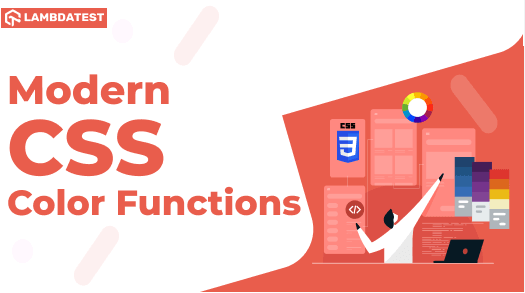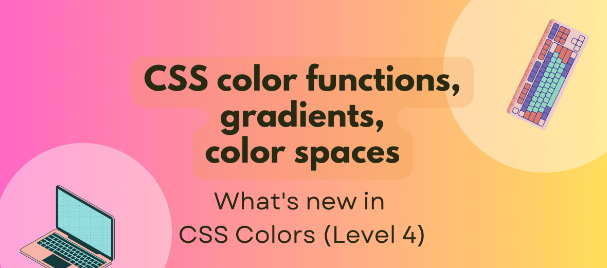In the ever-evolving realm of web design, cascading style sheets (CSS) play a pivotal role in shaping the visual aesthetics of a website. While CSS offers a multitude of styling options, CSS color functions are like hidden gems, waiting to be discovered by designers and developers. These functions, though often underestimated, can elevate your web design to new heights, providing a dynamic and creative touch to your projects.
Understanding CSS Color Functions
Color is a fundamental element in web design, influencing user perception, mood, and overall user experience. CSS color functions, introduced in CSS3 and further expanded in subsequent versions, offer a diverse set of tools for manipulating and managing colors.
Hexadecimal values have been the traditional way to specify colors in CSS, but CSS color functions provide a more dynamic and expressive approach. With functions like rgba(), hsl(), and hsla(), you can define colors using various color models, enabling you to work with transparency, hue, saturation, and lightness effortlessly.
Enhancing Color Flexibility with rgba()
One of the most versatile CSS color functions is rgba(), which stands for “red, green, blue, alpha.” This function allows you to specify a color by defining its red, green, and blue components along with an alpha value for transparency. This level of granularity grants designers precise control over color opacity, facilitating smooth overlays and gradients.
For instance, using rgba(255, 0, 0, 0.5) sets the color to red with 50% opacity. This can be a game-changer when you need to create visually engaging elements like subtle hover effects or interactive overlays.
Playing with Hues using hsl() and hsla()
While rgba() offers transparency control, hsl() and hsla() functions empower designers with the ability to manipulate colors based on their hue, saturation, and lightness. These functions use values between 0 and 360 for hue, and percentages for saturation and lightness.
By employing hsl(120, 100%, 50%), you can effortlessly produce vibrant shades of green. The addition of the alpha channel in hsla() lets you control the opacity, enabling elegant color transitions and layering effects.
Making Color Calculations with calc()
The calc() function, while not exclusively for color, can be employed creatively to perform calculations involving color values. For instance, you can calculate color transparency, brightness, or even mix two colors dynamically.
Imagine wanting to create a hover effect that slightly darkens a button’s color. You can use calc() to subtract a percentage from the lightness value, providing a smooth and visually pleasing transition.
Creating Color Variations with color()
CSS4 introduced the color() function, which allows you to manipulate and modify colors using various color adjustment functions. This powerful tool opens up a world of possibilities for creating color variations, harmonizing color schemes, and ensuring accessibility.
With color(), you can adjust the contrast, brightness, saturation, and even apply color filters to elements. This function is especially valuable when designing for accessibility, as it enables real-time adjustments to ensure text remains readable against different background colors.
Smooth Transitions and Gradients
In the world of web design, transitions and gradients are essential for creating visually appealing user interfaces. CSS color functions seamlessly integrate with these design elements. Hence, allowing for smooth transitions between colors and the creation of captivating gradients.
Transitioning Colors with Ease
Transitions are crucial for creating interactive and engaging web experiences. By using transition properties like color, designers can smoothly change the color of elements on hover or click. Transitions can be applied to various CSS color properties, making animations appear fluid and polished.
For instance, transitioning the color of a button’s text from black to white on hover can be accomplished with ease by specifying the transition on the color property. This enhances user feedback and adds a touch of elegance to your design.
CSS Color Functions

Crafting Striking Gradients
Gradients are another powerful design tool that CSS color functions complement. By using gradients, designers can seamlessly blend colors across elements, resulting in eye-catching backgrounds, buttons, and headers.
With CSS functions, you can define gradient stops with precise colors and control opacity to create stunning effects. Gradients are excellent for adding depth and dimension to your web design while maintaining a harmonious color palette.
Conclusion
In a world where creativity knows no bounds, CSS color functions emerge as a dynamic force in web design. Therefore, offering an array of possibilities for designers and developers. By delving into these functions and harnessing their potential, you can elevate your web projects to new heights of creativity and visual appeal. Do you know you can play casino games in the comfort of your home? Yes, Just visit any online casino site and start enjoying a wide variety of games.

